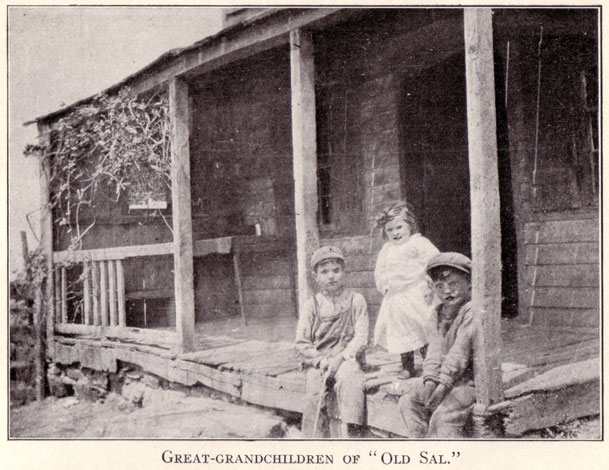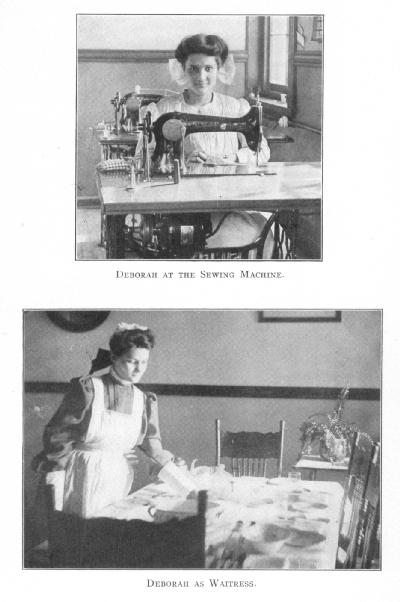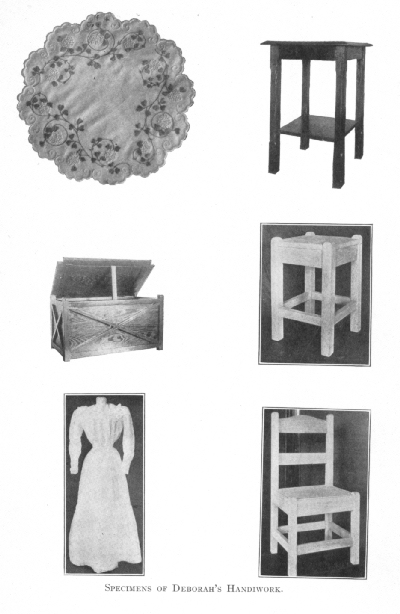


Negative Eugenics in America: the case of the "Kallikaks"



[At age 8,] "On the plea that
the child did not get along well at school and might possibly
be feeble-minded, she
gained admission to the Training School [Goddard's
Vinland School in New Jersey]...
Average size and weight. No peculiarity in form or size of
head. Staring expression. Jerking movement in walking. No
bodily deformity. Mouth shut. Washes and dresses herself,
except fastening clothes. Understands commands. Not very obedient. Knows a
few letters. Cannot read nor count. Knows all the colors. Not fond of music. Power
of memory poor. Listens well. Looks steadily. Good imitator.
Can use a needle [see examples of her work, at right]. Can carry wood and fill a
kettle. Can throw a ball,
but cannot catch. Sees and
hears well [many persons with hearing difficulties
were classified as 'feeble-minded' and institutionalized]. Right-handed [!!]. Excitable but not nervous. Not affectionate and quite noisy.
Careless in dress.
Active. Obstinate and
destructive. Does
not mind slapping and scolding...."
[At age
22,] "This is a
typical illustration of the mentality of a high-grade
feeble-minded person, the moron, the delinquent, the kind of
girl or woman that fills our reformatories. They are wayward, they get into
all sorts of trouble and difficulties, sexually and otherwise,
and yet we have been accustomed to account for their defects
on the basis of viciousness, environment, or ignorance. It is
also the history of the same type of girl in the public
school. Rather good-looking, bright in appearance, with many
attractive ways, the teacher
clings to the hope, indeed insists, that such a girl will
come out all right. Our work with Deborah convinces
us that such hopes are delusions.... She has been persistently trained
since she was eight years old, and yet nothing has been
accomplished in the direction of higher intelligence or
general education. To-day if this young woman were to
leave the Institution, she ... would lead a life that would be
vicious, immoral, and criminal, though because of her
mentality she herself would not be responsible. There is
nothing that she might not be led into, because she has no
power of control, and all her instincts and appetites are in
the direction that would lead to vice.... The question
is, 'How do we account for this
kind of individual?' The answer is in a word 'Heredity,' --
bad stock."
[Goddard
1913; emphasis added: Goddard's obsession with sexual
morality runs throughout his book]. Subsequent inspection of her
school records suggests that 'Deborah' may have had a learning
disability but was not otherwise developmentally delayed.
Goddard,
one of the founders of the science of Psychology, developed an
early IQ (Intelligence Quotient) test (1908) for use in
the United States, based on Binet's French model. The Binet Test
had been developed to identify those children who were not
performing at grade or age level, and therefore needed extra help. Starting
in 1910, Goddard instead used the numerical results of the test
to classify individuals as "morons" for those with an IQ
of 51-70 [like Deborah], "imbeciles" for those with IQ of
26-50, and "idiots" for those with IQ of 0-25.
Goddard's eugenic intent was not education, but rather isolation
and institutionalization, so as to prevent such persons from
reproducing.
Adopting his categories, the US Supreme Court in its
infamous Buck vs Bell (1927) ruling approved state laws
imposing mandatory sterilization for 'congenital' mental
deficiency with the phrase, 'Three generations
of imbeciles are enough." This case is considered among
the worst decisions ever made by SCOTUS, alongside others such
as Dred Scott vs Sandford (1857) (denying civil rights to
blacks, & legalization of slavery throughout the United
States), Plessy vs Ferguson (1892) (legalization of 'separate
but equality' facilities for blacks and whites), and Korematsu
vs US (1944) (legalization of the internment of
Japanese-American citizens). Most have been overturned by law or
subsequent SCOTUS decisions.
Images from the Eugenics Archive; text material © 2022 by Steven M. Carr